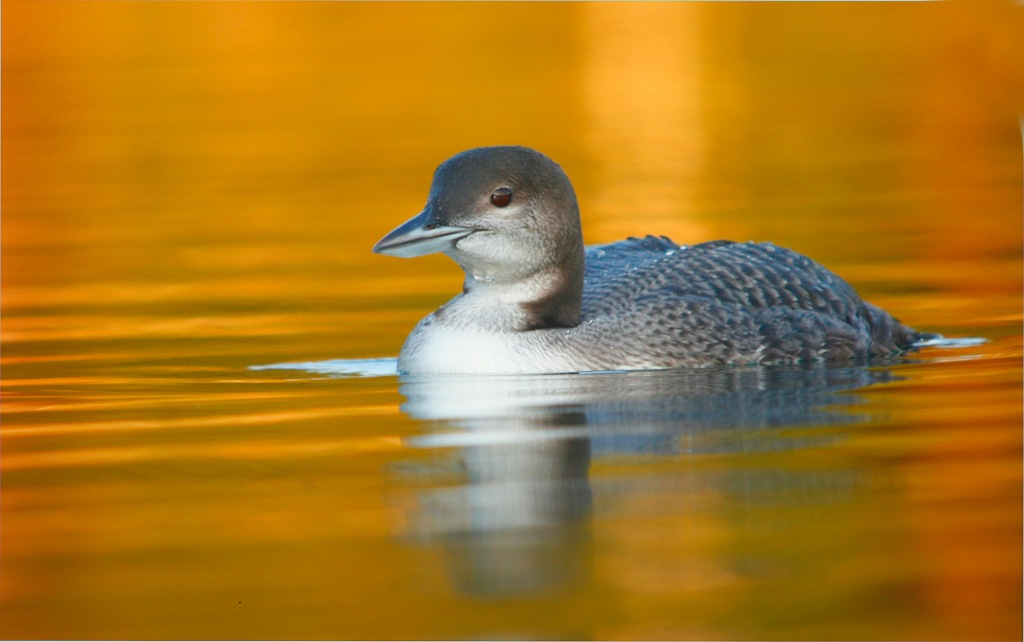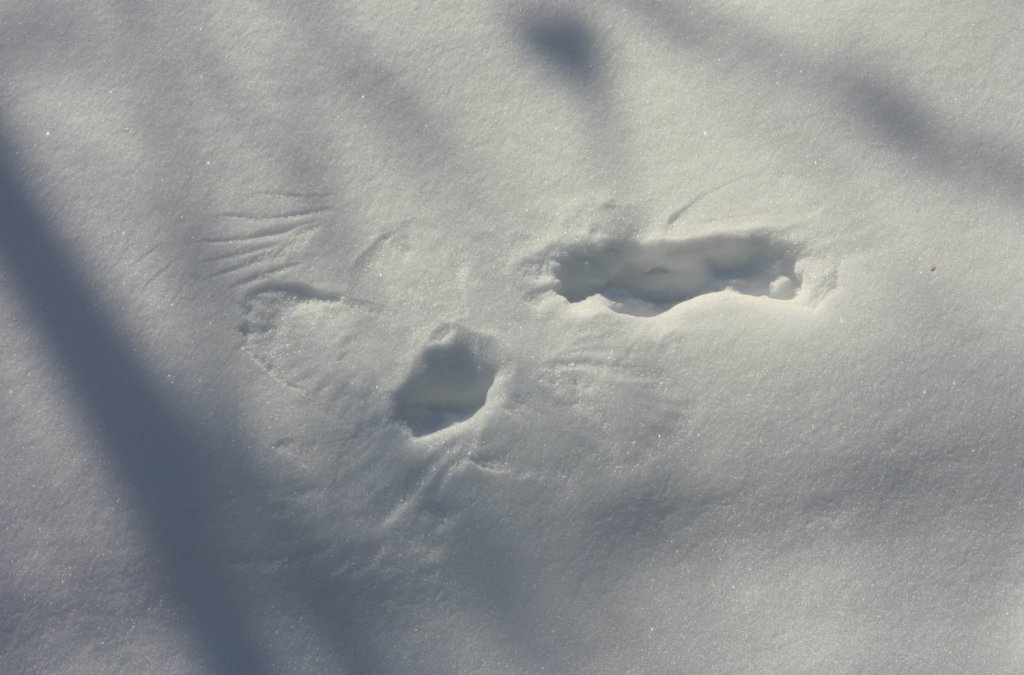Posted by Dan Arndt
As winter seems to be coming and going in bursts, this week’s visit to Votier’s Flats gave us both a few late fall migrants that appeared to be doing quite well in their attempt to muddle through the fairly mild autumn we’ve had so far, and a winter visitor that is once again making itself right at home in the city. On top of all that, we had a surprise sighting of a non-avian critter diving and splashing around in Fish Creek looking for a fishy breakfast! It was a good day, all in all!
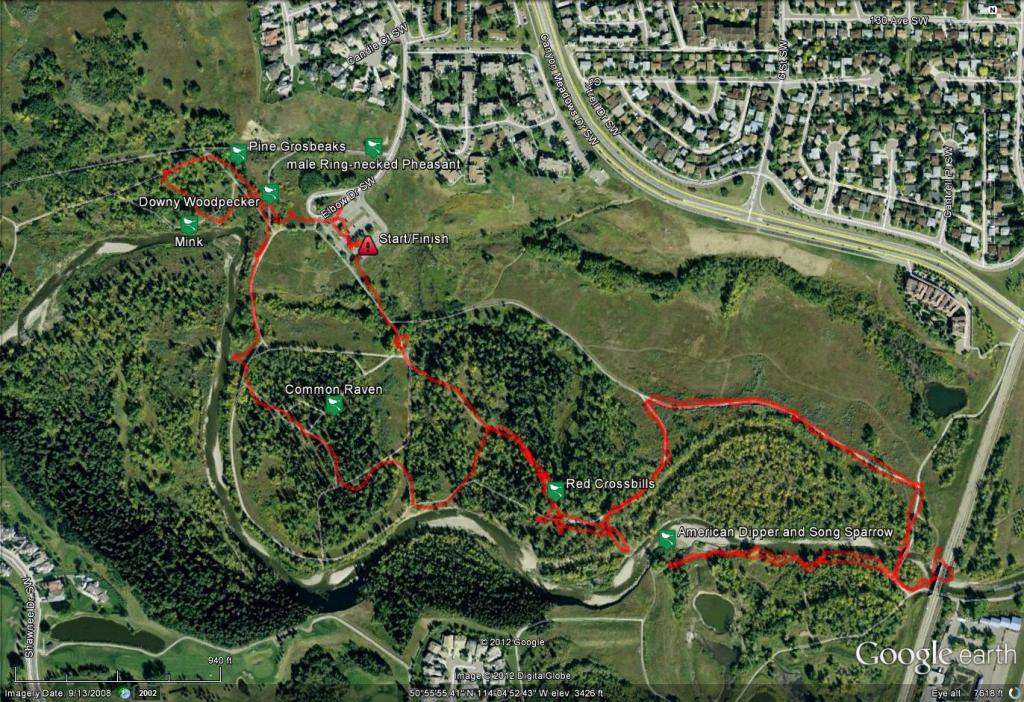
Votier’s Flats
Our first bird of the morning, while we were waiting for some stragglers to show up, was this male Ring-necked Pheasant. He flew in along the hillside to the north-east before coming to a rest at the road, and started up and across the road as I approached. Thankfully, he stopped just long enough for me to snap a few shots.
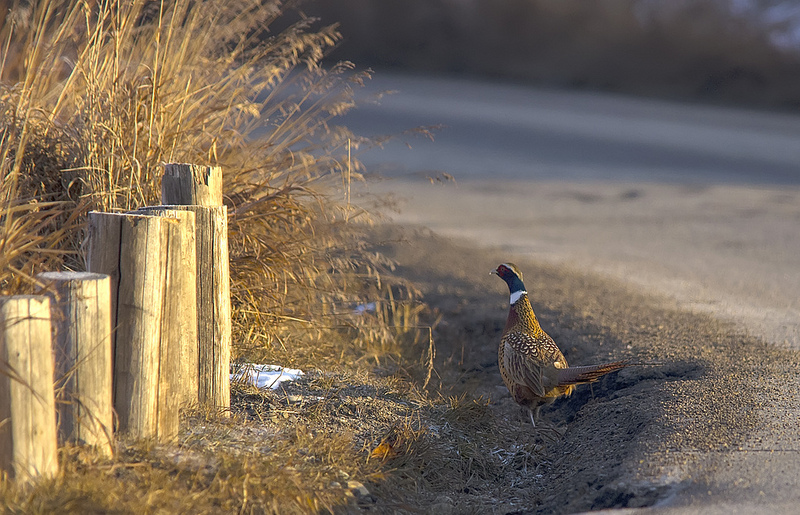
male Ring-necked Pheasant
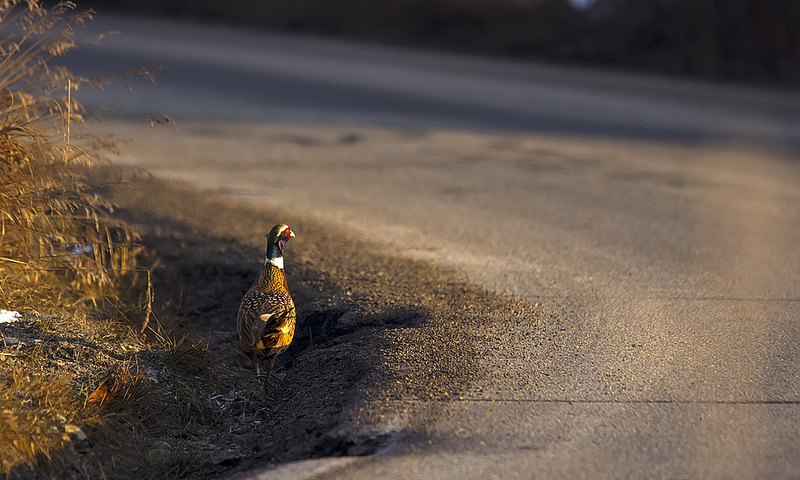
Looking both ways after crossing the street. Who ever said pheasants were smart?
We walked up the hill to the west overlooking the creek, and stopped briefly to look at a few Pine Grosbeaks, one of which had alerted us to its presence by flying directly above us and singing quite loudly. These two others kept their polite distance and allowed us to take good looks at them.
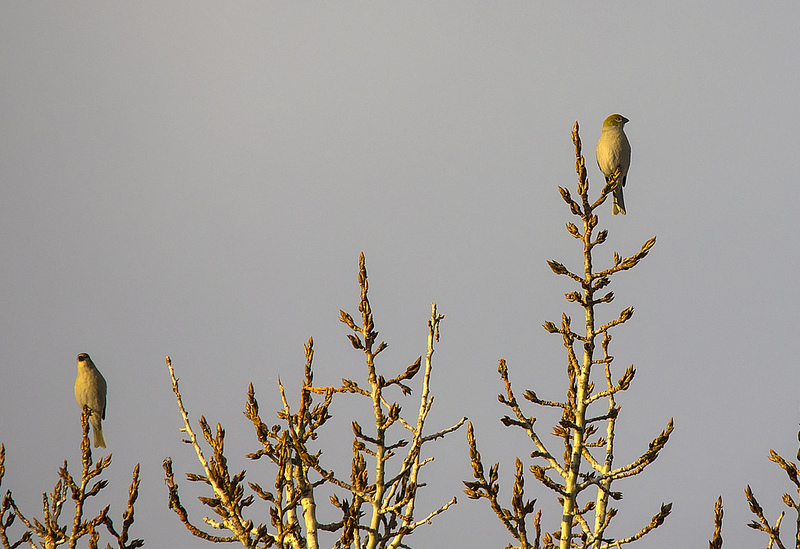
female or juvenile Pine Grosbeaks
We headed down the hill and walked a brief circle, accosted by Black-capped Chickadees and a couple of Red-breasted Nuthatches, but none that would stop long enough for me to snap their photo. Striking out on any less common birds at the base of the hill, we trekked back up the slope and took a look over the creek bed, and almost all of us were surprised to see this little fellow dipping in and out of the water, searching for something to nibble on.

Mink on the ice
Following the river, and down through the spruce stands at the bottom of the hill, we saw a few Common Ravens giving us flybys, heard a distant Blue Jay, and many more flocks of Black-capped Chickadees. This Common Raven even paused in a treetop to pose for a photo.

Common Raven
As we passed this guy, it quickly became possible to measure our progress by the number of flocks of Black-capped Chickadees, and three flocks of Chickadees and a single flock of Dark-eyed Juncos later, we heard the very distinct calling of Red Crossbills in the trees above us. Once again these Red Crossbills were very polite, very calm, and content to just sit in the treetops and watch us pass by.
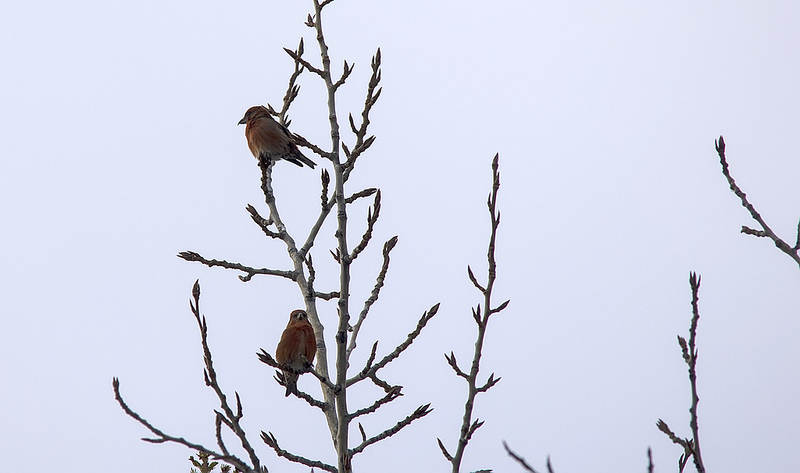
Red Crossbills
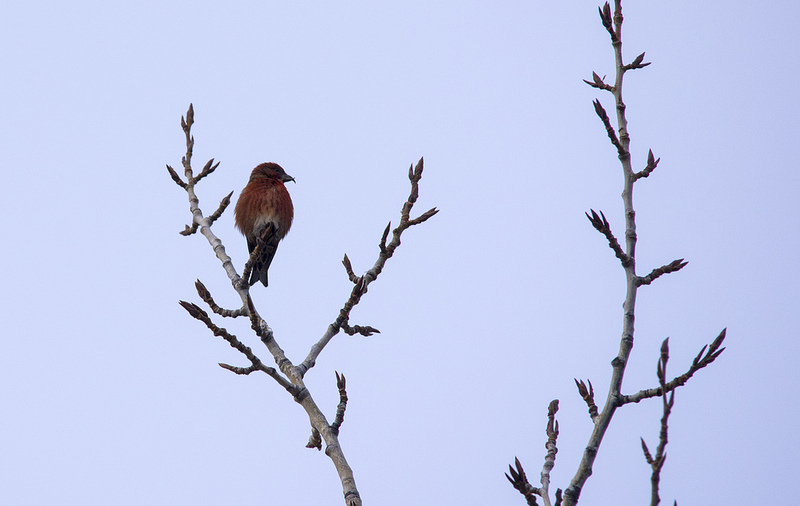
Red Crossbill showing off its namesake
Heading back to the main path, across the river, and over to the storm water drainage channel to where an American Dipper and Wilson’s Snipe had been seen, we came across a few more flocks of Black-capped Chickadees a couple of very large flocks of Pine Grosbeaks and a few flocks of White-winged Crossbills and Canada Geese flew overhead throughout. When we got to the drainage channel, we were surprised by this little beauty where the American Dipper should have been, and it allowed us very clear, diagnostic views allowing us to identify it as a Song Sparrow!
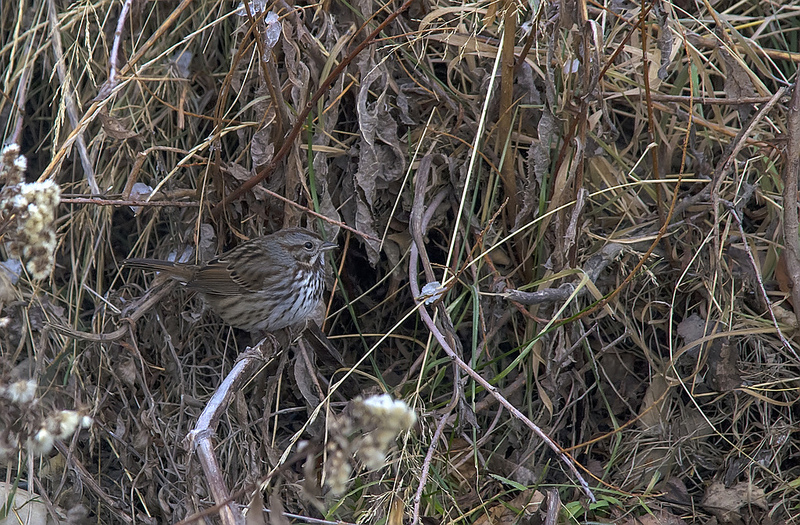
Song Sparrow

Song Sparrow looking for food on a raft of twigs and branches
Moments later, the American Dipper popped out and began briefly foraging with the Song Sparrow, before giving us quite the demonstration of how it earned its name.

Our first views of the American Dipper
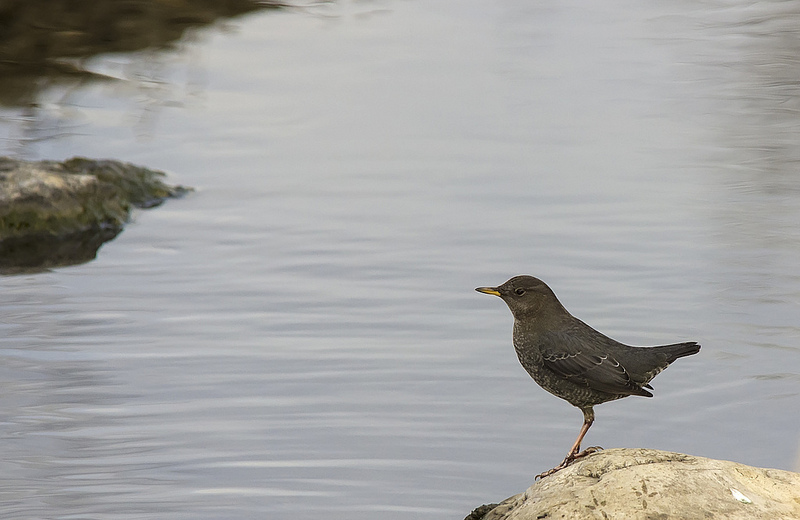
Our American Dipper briefly pausing on a rock before taking a dive
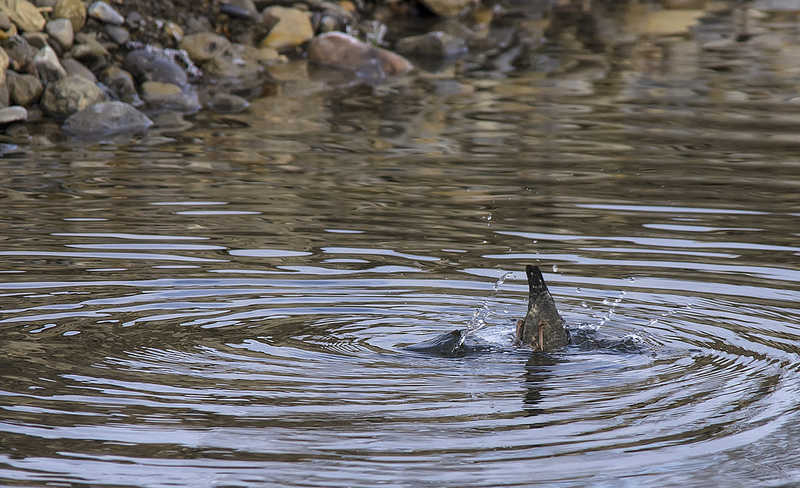
American Dipper taking a dip

And success! Our American Dipper comes up with… something edible I guess?
We walked back the way we came in hopes of glimpsing a Boreal Chickadee, Hairy Woodpecker, or maybe even get lucky enough to spot a Pileated Woodpecker, but sadly, no new species came to us on our walk back. As we parted ways and I walked back up the hill to check for the Mink again, I did spot this male Downy Woodpecker that was more than comfortable enough with me to let me get very close. Possibly too close for my camera to focus properly!
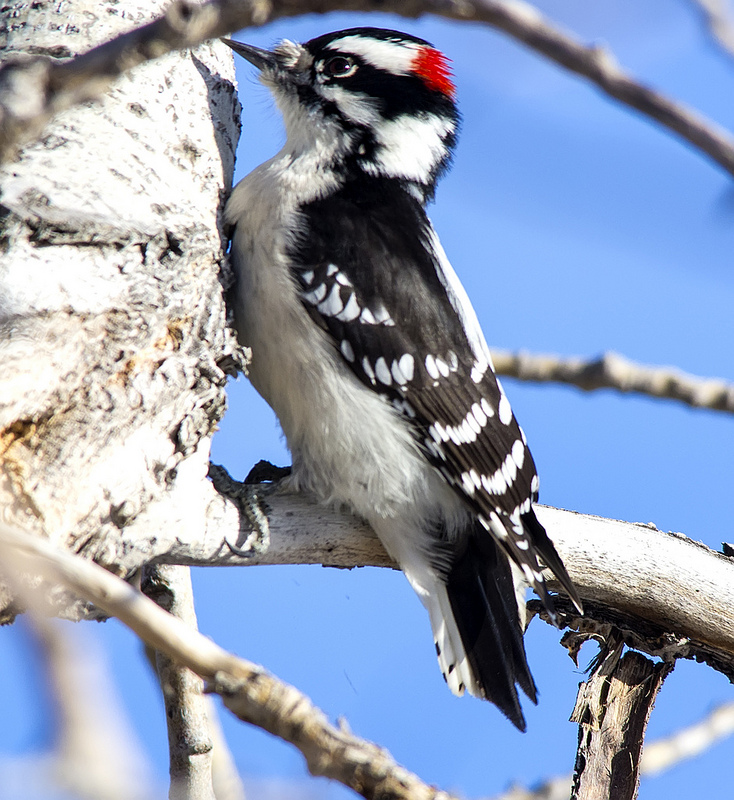
male Downy Woodpecker
Have a great week, and good birding!

